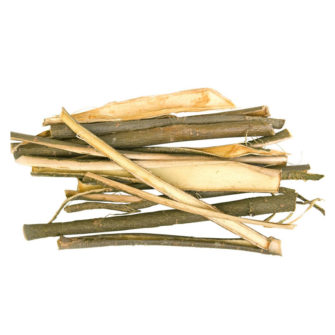White willow is an herb that has been used medicinally for centuries. The bark of the white willow tree contains a substance called salicin, a natural pain reliever. White willow bark can relieve pain from headaches, toothaches, arthritis, menstrual cramps, and other types of pain. The herb has been used since ancient times to reduce fever and inflammation. White willow is also effective in treating migraines, tension, and cluster headaches. Since white willow bark is a natural pain reliever, it can be used as an alternative to over-the-counter pain medications.
White Willow Uses
White willow bark can relieve pain from headaches, toothaches, arthritis, menstrual cramps, and other types of pain. It can also be used to reduce fever. According to studies, white willow bark may also treat other conditions such as osteoarthritis, obesity, and diabetes.
Some users say that white willow bark is a natural alternative to aspirin. Aspirin is derived from white willow bark. However, it is important to note that aspirin and white willow bark should not be taken together as this can increase the risk of side effects.
Side Effects of White Willow
White willow bark may cause gastrointestinal upset, including diarrhea, nausea, and vomiting. It may also cause skin rashes. In rare cases, it may cause more serious side effects such as bleeding and kidney damage. If you experience these side effects, stop taking white willow bark and see a doctor immediately.
Contraindications Related to White Willow
White willow bark should not be taken by people who are allergic to aspirin or other NSAIDs (non-steroidal anti-inflammatory drugs). It should also not be taken by people with bleeding disorders or kidney disease. Pregnant and breastfeeding women should avoid taking white willow bark. If you have any doubts about whether or not you should take white willow bark, please consult a healthcare professional.
Origins of White Willow
White willow is native to Europe and Asia. It has been used medicinally for centuries in these regions.
My Favorites
- No Favorites Yet

